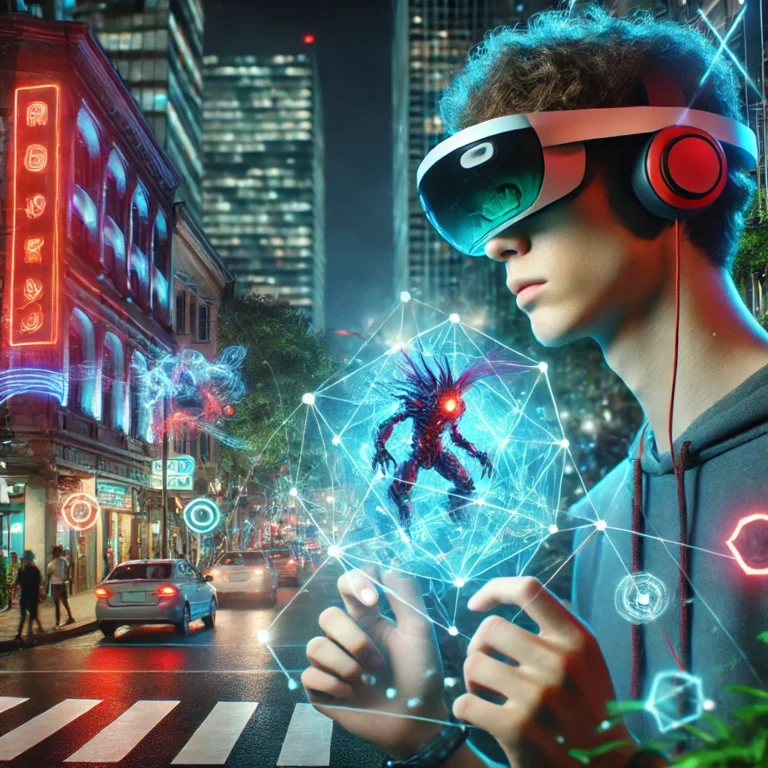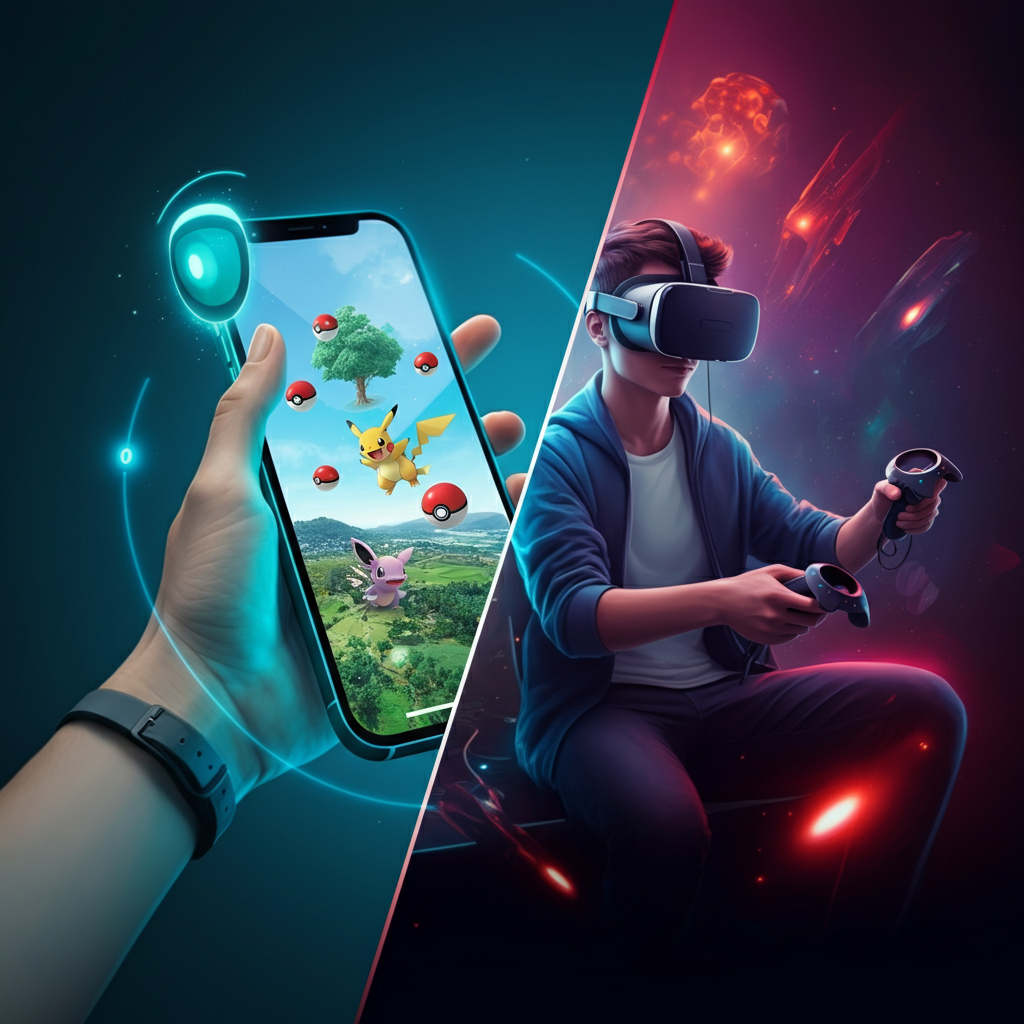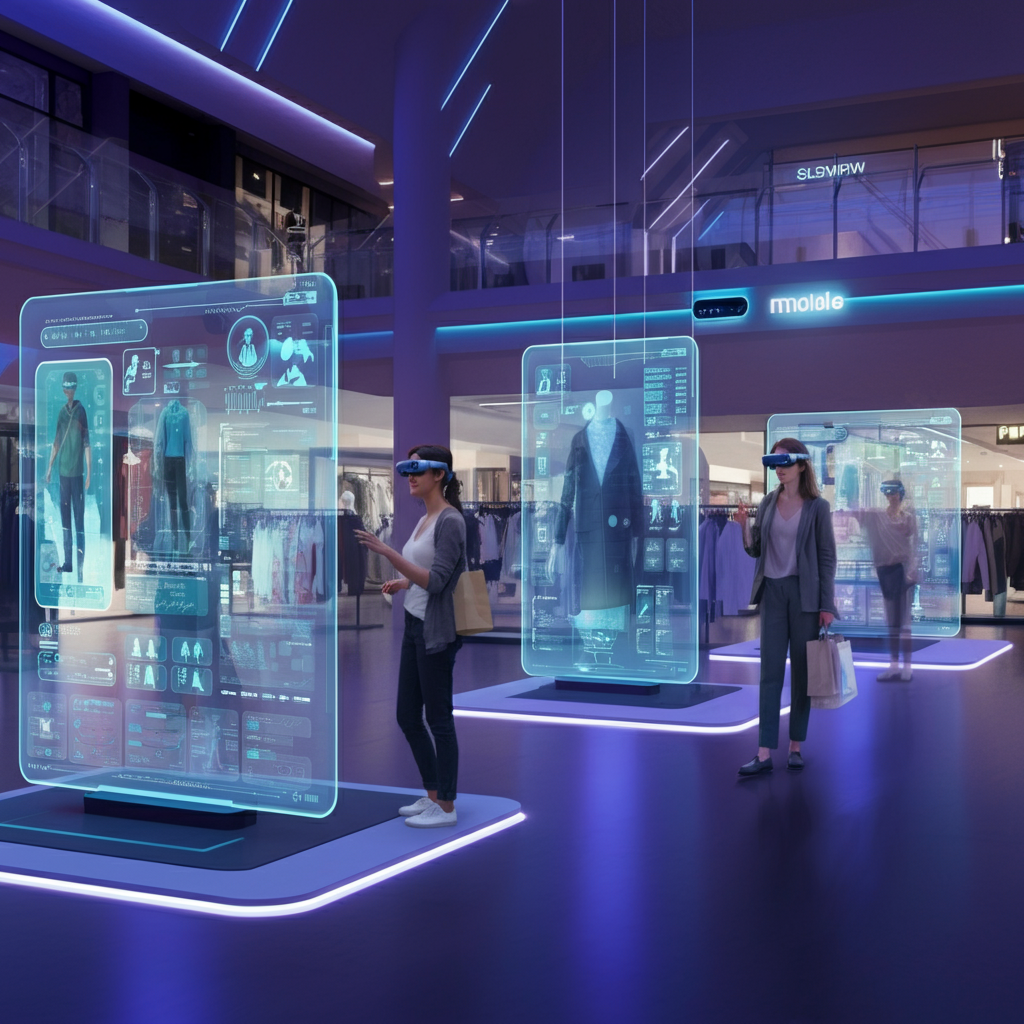Introduction
Augmented Reality (AR) has transformed the gaming and entertainment industries by blending digital elements with real-world environments.
Unlike Virtual Reality (VR), which immerses users in a completely digital space, AR overlays digital graphics, sounds, and interactions onto the physical world.
The rise of smartphones, AR glasses, and advanced software has made AR more accessible, enabling developers to create innovative experiences that enhance entertainment in unprecedented ways.
This blog explores AR’s impact on gaming and entertainment, its technological advancements, key applications, challenges, and the future of this evolving industry.
Evolution of AR in Gaming and Entertainment
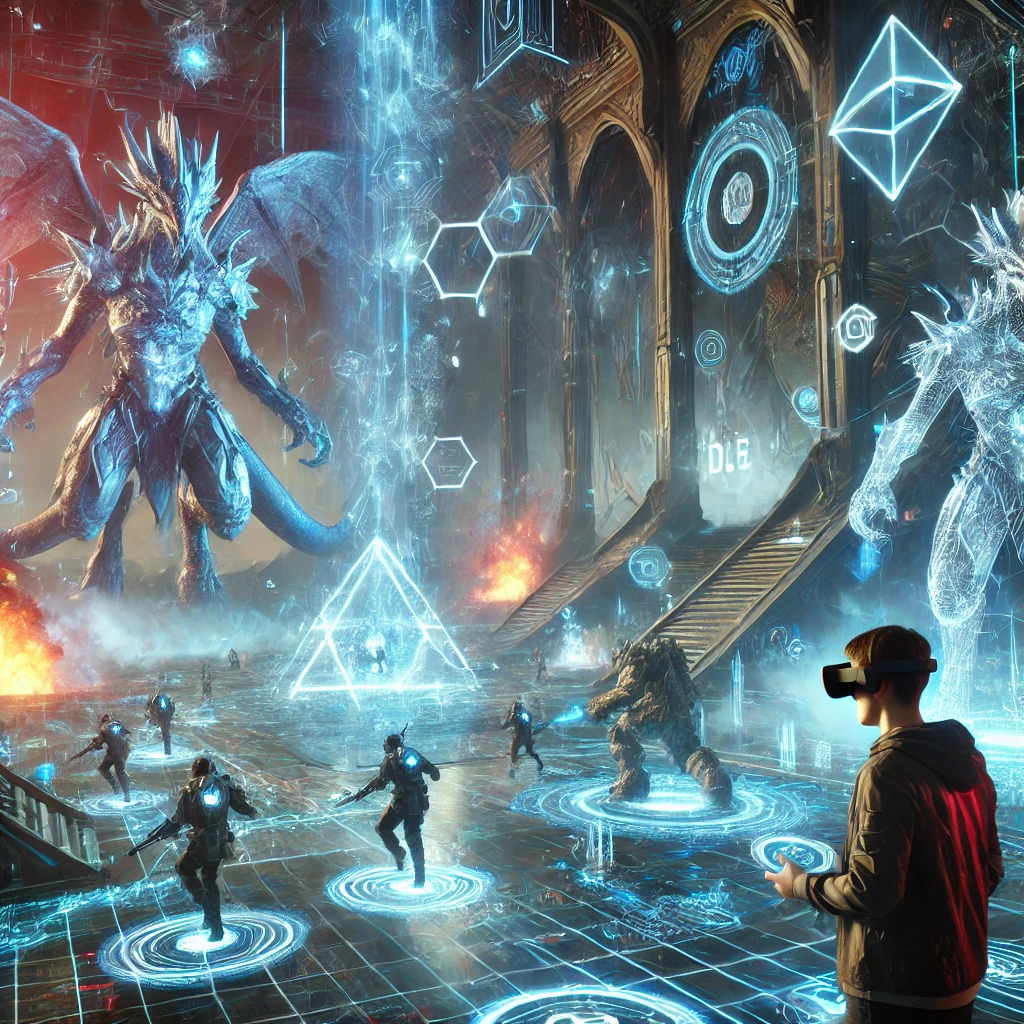
The roots of AR date back to the 1960s when Ivan Sutherland developed the first head-mounted display, the “Sword of Damocles.”
However, AR gained significant traction in the 2000s with the advancement of mobile computing.
Early AR applications included experimental games and interactive museum exhibits.
Breakthrough in Mobile AR Gaming
The introduction of ARKit (Apple) and ARCore (Google) in 2017 revolutionized AR gaming by providing developers with tools to create high-quality AR experiences.
Pokémon GO, launched in 2016, became a global sensation, demonstrating the potential of AR in mobile gaming.
The game encouraged players to explore real-world locations, collect virtual Pokémon, and interact with other players.
Expansion into Other Entertainment Fields
AR quickly expanded beyond gaming into live concerts, sports events, theme parks, and interactive movies.
AR in gaming and entertainment enabled artists to create immersive experiences, such as holographic concerts, where virtual performers share the stage with real artists.
Theme parks, such as Disneyland, have incorporated AR to enhance rides and attractions, making storytelling more engaging.
How AR Enhances Gaming
1. Real-World Integration
AR enables games to be played in real-world settings.
Unlike traditional video games, where players remain stationary, AR games encourage physical movement and exploration.
For example, The Walking Dead: Our World uses location-based AR to make players fight zombies in their actual surroundings.
2. Interactive and Social Gameplay
AR makes gaming more interactive by allowing players to interact with digital characters and objects superimposed on their environment.
Multiplayer AR games, such as Minecraft Earth, let users collaborate and build virtual structures in the real world.
Social AR gaming enhances engagement by allowing users to share their experiences with others.
3. Enhanced Realism and Immersion
AR-powered games use real-world physics and environments to create immersive experiences.
Games like Harry Potter: Wizards Unite use AR to bring magical creatures to life in everyday locations, making the gameplay feel more realistic.
4. Improved Training and Skill Development
AR is used in educational games to teach players new skills in an interactive way.
AR-based simulations help train medical professionals, pilots, and military personnel through gamified experiences.
AR Surgery Simulator, for instance, allows medical students to practice surgical procedures in a risk-free environment.
AR in Entertainment Beyond Gaming
1. AR in Movies and TV Shows
Film studios use AR to enhance storytelling and create interactive experiences.
Some movies integrate AR companion apps that allow viewers to explore behind-the-scenes content, interact with characters, and access additional storylines.
Blade Runner 2049 and Star Wars have experimented with AR-driven promotional content.
2. AR in Live Concerts and Events
Artists and event organizers use AR to create visually stunning performances.
AR projections can enhance stage performances by displaying holograms, special effects, and virtual backdrops.
For instance, Coachella has experimented with AR-enabled festival experiences, allowing fans to see virtual creatures and animations through their smartphones.
3. AR in Sports Broadcasting
Sports broadcasters use AR to display real-time stats, player insights, and interactive visualizations during live matches.
The NFL and NBA have integrated AR-powered graphics to enhance audience engagement by overlaying player statistics, tactical insights, and replays onto the field.
4. AR in Theme Parks and Museums
Theme parks, such as Universal Studios and Disneyland, use AR to make attractions more interactive.
AR-based exhibits in museums allow visitors to explore ancient civilizations, view 3D reconstructions of artifacts, and experience history in an engaging way.
The Smithsonian and The British Museum have integrated AR apps to enhance visitor engagement.
5. AR in Theatre and Performing Arts
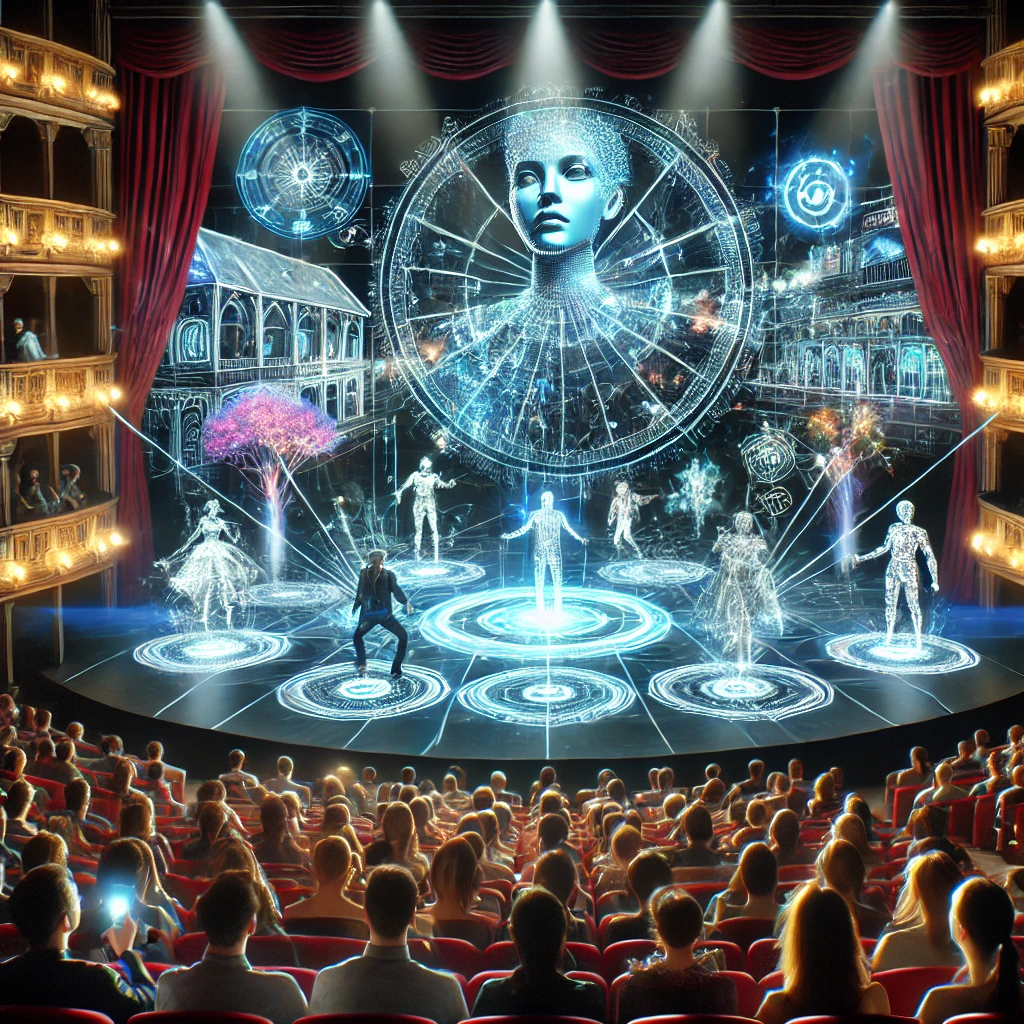
Theatre productions use AR to create immersive stage effects, such as digital backgrounds that change in real time based on the actors’ movements.
The Royal Shakespeare Company has experimented with AR-based stage designs to enhance storytelling.
Technological Advancements Powering AR in Gaming and Entertainment
1. AR Hardware Development
- AR Glasses & Headsets: Devices like Microsoft HoloLens, Magic Leap, and Apple Vision Pro provide high-quality AR experiences by overlaying digital elements onto the real world.
- Smartphones & Tablets: Modern smartphones with AR capabilities enable millions of users to access AR entertainment easily.
2. AI and Machine Learning Integration
AI enhances AR experiences by enabling real-time object recognition, motion tracking, and facial recognition.
AI-powered AR games can adapt to users’ environments, making interactions more dynamic.
3. 5G and Cloud Gaming
The rise of 5G technology allows for faster data transmission, reducing latency in AR experiences.
Cloud-based AR gaming services enable players to stream high-quality AR content without requiring expensive hardware.
4. Haptic Feedback & Gesture
RecognitionAdvancements in haptic technology allow players to “feel” virtual objects, enhancing immersion. Gesture recognition enables hands-free interaction with AR content, improving accessibility.
Challenges and Limitations of AR in Gaming and Entertainment
1. Hardware Limitations
High-quality AR experiences require advanced hardware, such as AR glasses or powerful smartphones, which may be expensive for some users.
2. Battery Consumption
AR applications consume significant battery power, making long-duration gaming or entertainment experiences challenging without frequent charging.
3. Privacy and Security Concerns
AR applications often require access to cameras and location data, raising concerns about data privacy and security.
Unauthorized use of AR tracking could lead to breaches of personal information.
4. Technical and Development Costs
Developing high-quality AR content requires advanced skills and significant investment.
Small developers may struggle to compete with large corporations in creating cutting-edge AR experiences.
5. Public Adoption and Accessibility
Despite its potential, AR adoption is still in its early stages.
Many users are unfamiliar with AR applications, and widespread adoption may take time as the technology matures.
The Future of AR in Gaming and Entertainment
1. AR-Powered Metaverse
The metaverse concept envisions a fully immersive digital world where AR plays a crucial role.
Companies like Meta (formerly Facebook) are developing AR-based social experiences where users can interact in shared virtual spaces.
2. AR-Integrated Smart Cities
Future AR applications may integrate with smart city infrastructures, providing interactive entertainment in urban spaces.
Imagine walking through a city where historical buildings come to life with AR-based storytelling.
3. Enhanced AR Wearables
As AR glasses become more affordable and compact, more users will engage with AR entertainment seamlessly in daily life.
Apple Vision Pro and Meta’s AR devices are pushing toward this future.
4. AI-Driven Personalized AR Experiences
AI will enable AR applications to personalize content based on user preferences, behavior, and surroundings.
AI-powered AR assistants could provide customized entertainment recommendations.
5. Integration with Other Emerging Technologies
AR will continue to evolve alongside VR, AI, blockchain, and IoT, creating interconnected entertainment ecosystems.
Blockchain technology may support AR-based digital ownership, such as virtual collectibles and NFTs in AR games.
Conclusion
Augmented Reality is redefining gaming and entertainment by merging digital content with the real world.
From interactive gaming experiences and live concerts to immersive sports broadcasting and smart cities, AR is paving the way for a new era of engagement.
Despite challenges like hardware limitations and privacy concerns, advancements in AI, 5G, and AR hardware are shaping a future where AR becomes a mainstream entertainment medium.
As technology continues to evolve, AR will unlock new possibilities, making entertainment more immersive, social, and interactive than ever before. The future of gaming and entertainment is undoubtedly augmented.

